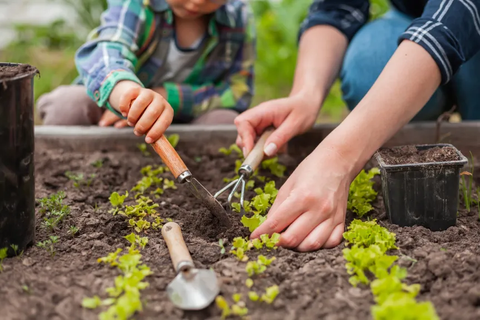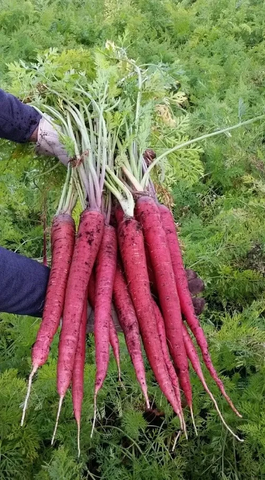As the days grow shorter and the air becomes crisper, fall heralds a season of rich flavors and fragrances. It's the perfect time to embrace the world of aromatic herbs, where the garden's bounty can be preserved and enjoyed long after the last leaves have fallen. In this comprehensive guide, we'll explore the pleasures of growing and preserving aromatic herbs during the fall season. From selecting the right herbs to creative preservation methods, you'll discover how to make the most of these herbal delights.The following content also has some reference value for raised garden beds.
The Aromatic Bounty of Fall
Aromatic herbs are a true treasure in any garden, and they reach their peak of flavor and fragrance during the fall. These herbs are not only delightful to the senses but also versatile in the kitchen and useful for various wellness purposes. Here are some of the reasons to embrace aromatic herbs in the fall:
Rich Flavors: Aromatic herbs develop intense flavors in response to the cooler temperatures and shorter days of fall.
Warmth and Comfort: The fragrances of herbs like rosemary, thyme, and sage evoke feelings of warmth and comfort, making them ideal for fall dishes.
Wellness Benefits: Many aromatic herbs have medicinal properties that can help boost your immune system and soothe cold-weather ailments.
Preservation: Fall is the perfect time to harvest and preserve herbs for use throughout the winter, ensuring a steady supply of fresh flavors.
Now, let's explore a selection of aromatic herbs that thrive in the fall and ways to grow and preserve them for your culinary and wellness endeavors.

Popular Aromatic Herbs for Fall
1. Rosemary
- Rosemary thrives in fall's cooler temperatures. Its robust flavor pairs beautifully with roasted meats and root vegetables.
2. Thyme
- Thyme is a versatile herb that adds depth to soups, stews, and roasted dishes. It retains its flavor well during drying.
3. Sage
- Sage's earthy, peppery flavor is a fall favorite. It's perfect for infusing into butter for drizzling over pasta or squash.
4. Oregano
- Oregano offers a zesty flavor that complements tomato-based sauces and roasted vegetables. Dry oregano by hanging bundles upside down in a well-ventilated area.
5. Mint
- Mint is excellent for making soothing teas and adding freshness to both sweet and savory dishes. Preserve mint by freezing it in ice cubes or drying the leaves.
6. Basil
- While basil prefers warmer weather, it can still thrive in early fall. Use it to make pesto, infuse oils, or dry it for later use.
7. Lavender
- Lavender's fragrant flowers can be harvested for making teas, sachets, and culinary infusions. Hang lavender bundles upside down to dry.
8. Parsley
- Parsley's fresh, vibrant flavor enhances a wide range of dishes. It can be dried or frozen for preservation.
9. Chives
- Chives provide a mild onion flavor that pairs well with potatoes and creamy soups. Freeze chopped chives in small containers or oil for easy use.
10. Coriander
- Coriander seeds are a delightful spice for fall baking and pickling. Harvest the seeds when they turn brown and dry them thoroughly.
Growing Aromatic Herbs in Fall

Growing aromatic herbs in the fall can be a rewarding endeavor. Here are some tips to ensure your herbs thrive during this season:
Select the Right Herbs
- Choose herbs that are well-suited to fall growing conditions. Rosemary, thyme, sage, and oregano are excellent choices.
Plant in Well-Drained Soil
- Ensure your herbs are planted in well-drained soil to prevent waterlogged roots.
Provide Adequate Sunlight
- Most herbs thrive in full sun. Make sure they get 6-8 hours of sunlight each day.
Water Carefully
- Be mindful of watering. Fall typically brings more rainfall, so adjust your watering schedule accordingly.
Protect from Frost
- Keep an eye on the weather and protect your herbs if frost is forecasted. Covering them with cloth or using row covers can help.
Harvest Gently
- When harvesting, use sharp scissors or shears to cut the herbs rather than pulling them. This encourages healthy regrowth.
Preserving Aromatic Herbs for Fall and Beyond
Preserving your aromatic herbs allows you to savor their flavors and aromas long after the growing season has ended. Here are several preservation methods to consider:
Drying
- Air drying is a traditional and effective method for preserving herbs like rosemary, thyme, sage, and oregano. Hang bundles of herbs upside down in a dry, well-ventilated area until they are completely dry. Once dried, store them in airtight containers.
Freezing
- Freezing herbs like mint, basil, parsley, and chives is an easy way to retain their freshness. Chop the herbs, place them in ice cube trays, cover with water or olive oil, and freeze. Pop out the cubes as needed for cooking.
Infusing Oils and Vinegars
- Create herb-infused oils and vinegars for culinary experimentation. Fill a clean, dry bottle with herbs and cover with oil or vinegar. Allow the mixture to infuse for a few weeks before straining and using.

Herbal Butter
- Make herb-infused butter by mixing finely chopped herbs with softened butter. Form the mixture into a log, wrap it in plastic wrap, and freeze. Slice off portions as needed.
Herbal Salt or Sugar
- Blend dried herbs with sea salt or sugar to create unique seasonings. Store them in airtight containers for use in cooking or baking.
Herbal Tea Blends
- Create your own herbal tea blends using dried herbs like mint, lavender, and coriander. Store them in airtight containers or tea bags for easy brewing.
Herbal Syrups
- Craft sweet herbal syrups by simmering herbs with sugar and water. Strain and store the syrup for use in cocktails, beverages, or drizzling over desserts.
Fall Herbal Delights in the Kitchen
Now that you've grown and preserved your aromatic herbs, it's time to incorporate them into your fall culinary adventures. Here are some delicious ideas to get you started:
- Rosemary Roasted Vegetables: Toss root vegetables with olive oil, minced rosemary, and a pinch of sea salt before roasting for a flavorful side dish.
- Sage-Infused Brown Butter: Melt butter in a pan and add sage leaves for a fragrant and decadent sauce to drizzle over pasta or butternut squash.
- Thyme-Infused Soups: Add fresh thyme leaves to soups and stews for an earthy and aromatic flavor.
- Minty Hot Chocolate: Create a soothing cup of hot chocolate by adding fresh mint leaves to your cocoa.
- Oregano-Tomato Sauce: Enhance the flavors of your tomato-based sauces with dried oregano for a taste of summer all year round.
- Lavender Shortbread Cookies: Bake delicate shortbread cookies with a hint of dried lavender for a unique and floral dessert.
- Parsley Pesto: Whip up a parsley pesto with garlic, Parmesan cheese, and pine nuts to use as a sauce, dip, or spread.
- Chive and Cream Cheese Stuffed Mushrooms: Combine chopped chives with cream cheese to stuff mushrooms for a delightful appetizer.
- Basil-Infused Olive Oil: Create a basil-infused olive oil that's perfect for drizzling over Caprese salads or grilled vegetables.
- Coriander Pickles: Use coriander seeds to add depth of flavor to homemade pickles or pickled vegetables.
Conclusion
Fall is a season of abundance, and your garden's aromatic herbs are no exception. By selecting the right herbs, providing them with the proper care, and using creative preservation methods, you can enjoy the flavors and fragrances of these herbal delights long after the fall harvest. Whether you're infusing oils, creating herbal tea blends, or using fresh herbs in your fall dishes, the rich and aromatic bounty of the season is yours to savor. So, embrace the pleasures of growing and preserving aromatic herbs this fall, and let your culinary and wellness journeys be filled with the delightful essence of these herbal treasures.









